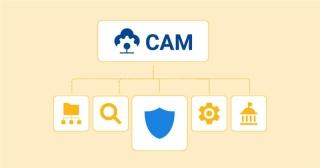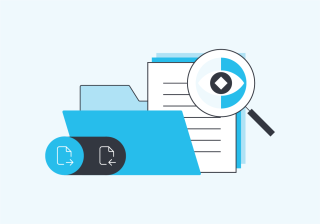The 5 Pillars of CAM: Classify Your Projects with Custom Metadata
The last few years have seen organizations adopt a plethora of new collaboration platforms as they've adapted to the new hybrid work model.
Through systems like Microsoft Teams and the DMS, organizations are collaborating across borders and time zones like never before. However, this explosion of hybrid work has also spawned an immense amount of data chaos. As organizations were forced to act quickly and migrate to these systems, some of the planning and set-up may have gone by the wayside.
Now that organizations are more acclimated to this hybrid environment, attention must be centered back upon security and efficiency.
In our previous blog, we talked about how provisioning folders and workspaces is the first step to governing and organizing your folders and workspaces. This time, we'll discuss how classifying your data, matters, projects, etc. with rich, custom metadata can help your organization stay aware of where your data is and keep data chaos at bay.
What is Data Chaos? Why Should We Avoid it?
Data chaos is basically what happens when an organization becomes so inundated with loose and extraneous documents and projects that it begins to create both operational drags and cyber risks.
For instance, in any given firm a lawyer may be assigned to multiple matters. Each one of those matters is likely to have dozens and even hundreds of documents and files associated with them. Multiply this over a handful of matters and across multiple lawyers and it becomes clear how easy it is for this information to spin out of control.
This alone can create massive hiccups in productivity as users scramble to find the documents they need. To complicate things further, users often save and store files in their vulnerable personal drives or with naming conventions that don't provide context for other users they may be collaborating with.
This human error causes breakdowns in the matter lifecycle, but also puts organizations at risks.
In the event of a cyberattack or outage, not only would your files be open to theft and ransom, but your risk management team would also lack the necessary context to locate data and initiate the proper security policies.
So, what's the solution? We recommend classifying with rich, custom metadata.
Metadata is Your Friend
As we mentioned in our last post, provisioning of workspaces and folders is a key first step for organizing your collaboration platform. As a reminder, ensuring that users understand where to place their documents and how to find them is key to governance. Providing the same folder structures across collaboration systems helps users locate content, increases adoption, and decreases the likelihood of data chaos. Underlining a clear and consistent naming convention is also paramount.
Your organization should create Teams and folders with the appropriate Channels to reflect the structure of the project in the DMS. Having readily available templates to automatically apply to Teams makes the process more efficient.
Once your workspaces have been provisioned, it's time to add the metadata!
Your risk management team needs to understand the context or business purpose of a document before applying security and minimization. Without metadata, they have to manually check each document, making the process highly inefficient.
By applying metadata to projects, risk teams and users alike can simply enter keywords or phrases to quickly locate and identify matters – alleviating hours of manual searches across thousands of matters.
Since some platforms, like Teams, do not allow extensive metadata, you should look for solutions that offer the application of rich, custom metadata. Such a solution saves time and reduces IT costs, decreasing the likelihood of inappropriate access.
Looking for a solution that can help strengthen your data? Look no further.
How CAM Helps
CAM is a Software-as-a-Service platform (SaaS) for adoption and governance of multiple collaboration systems. It allows organizations to provision, classify, protect, manage, and govern data, mitigating data chaos and reducing risks related to privacy & cybersecurity.
CAM enables organizations to create logical locations for users to place data. It provides rich, custom metadata, empowering users to locate documents, and risk management teams to understand business context to apply the right security & data minimization policies. CAM also created a unified project directory to further facilitate content location.
CAM integrates with Microsoft 365 (Microsoft Teams, SharePoint Online, OneDrive, OneNote, Planner, Lists), iManage, NetDocuments, files shares, and more to come.
If you want to learn more about CAM's classifying capabilities, book a demo today and talk to one of our experts.


